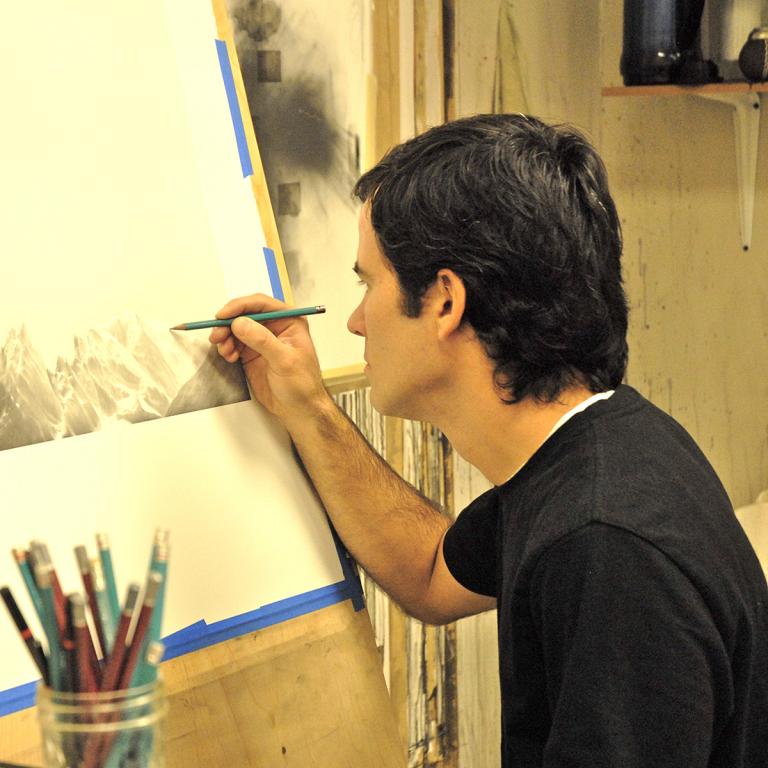
Souto's 'A Memory in Peril' exhibition responds to his native Venezuela
calendar icon12 Sep 2016

Lincoln, Neb.—University of Nebraska–Lincoln Professor of Art Francisco Souto opens a solo exhibition titled “A Memory in Peril” at the Kiechel Fine Art Gallery in Lincoln on Sept. 16.
The exhibition runs Sept. 16-Nov. 1 at the gallery, located at 1208 O St. An opening reception will be held on Friday, Sept. 16 from 6-9 p.m.
“A Memory in Peril” is a compilation of works in response to the current reality that is affecting Souto’s native land of Venezuela.
“These drawings are visual testimonies of the social, economical and political deterioration that is eroding Venezuela,” Souto writes in his artist statement.
The country has been torn apart for the last 18 years.
“It’s important to give a voice to the unheard,” Souto said. “I want to talk about the humanitarian aspect of what’s happening in Venezuela, which a lot of people might not be aware of. I’m not trying to do political art, but it’s to show what my country is going through. I’m just talking about the people. That, for me, was the driving force in the work.”
Souto’s work was slowly conceived as a direct response to testimonies of families and friends.
“They are an attempt to offer a collective experience of struggle and perseverance,” he said.
Some of the drawings are very descriptive of what is happening.
“In the drawing depicted on the invitation to the show, ‘Long Food Line,’ there are 90-100 people waiting in line,” Souto said. “The lines for food are a reality. Some people are there for hours. Sometimes they go at 6 in the morning, and by the time they get to the entrance of the supermarket, it will be noon. If you are lucky you get to buy a few items, but it is possible the supermarket runs out of food before you get to the entrance, and you go home empty handed after hours of standing up. Lines are part of the routine for most people down there. I don’t live in that reality, because I’m here, but I live it through my family and friends.”
The exhibition currently includes 23 pieces. Twenty of them are smaller in size, 20” x 20”. But three of them are large-scale, 8’ x 2’. Souto also hopes to add a 24th piece by the time the exhibition opens.
“I spent my childhood and youth in Venezuela,” he said. “But I’ve been here for 20 years. The country I remember is no longer the country I see. My memory has been eroded by the current situation, so every time I go back, I don’t see the Venezuela I left.”
Souto’s entire family and in-laws all still live in Venezuela. His family last returned there three years ago, but he doesn’t know if they will be back.
“We went knowing that it could be the last time,” he said. “It felt that way, and I think that will still be the way until something changes. That is the hope. There is crude reality in these drawings, but you can also feel some optimism. Hopefully things will move toward a better situation.”
His focus in this exhibition is the humanitarian aspect of what is going on in Venezuela.
“My biggest challenge in making all this work is to present to people the cruel reality as it is happening, but I didn’t want to use the same tools the government uses, so I’m trying to make beautiful drawings, while engaging the viewer into deeper reflection,” Souto said. “In a way, I’m cursing with a whisper, if you will. I don’t want to scream. I don’t want to use the same brutality. I’m dealing with the human aspect of it. It’s about people and for people, more than anything else.”
Next year, the exhibition will travel to a museum in Buggenhagen, Germany.